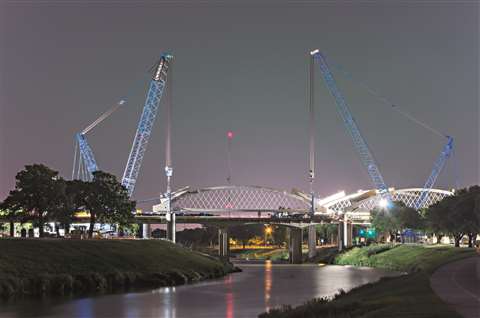OSHA guidance for virus protection
15 April 2020
The following article, by Michael Rubin, a Partner at US law firm Goldberg Segalla, was first published in American Cranes & Transport (ACT) magazine.
Although there are no specific OSHA standards covering COVID-19, certain standards may apply. Section 5(a)(1) of the OSH Act, known as the “General Duty Clause,” requires that employers furnish to each worker “employment and a place of employment, which are free from recognized hazards that are causing or are likely to cause death or serious physical harm.”

Furthermore, employers are required to assess any hazards present in the workplace (or likely to be present) and implement appropriate controls, such as personal protective equipment (PPE). For example, section 1910.132(d) of the General industry standards requires that employers verify that a workplace hazard assessment has been performed through a written certification, and section 1926.21(b)(2) of the Construction standards requires that employers instruct each employee in the recognition and avoidance of unsafe conditions and the regulations applicable to the work environment to control or eliminate any hazards.
Moreover, section 1910.134(a)(2) of the respiratory protection standard generally declares that employers must provide a respirator to an employee “when such equipment is necessary to protect the health of such employee.”
When respirators are necessary to protect workers or where employers require respirator use, employers must implement a comprehensive respiratory protection program – one that includes, among other things, medical evaluations and fit testing of employees.
OSHA guidance
OSHA recently released Guidance on Preparing Workplaces for COVID-19 to assist employers protect their workers from the coronavirus. The guidance “is advisory in nature” (that is, not a standard or regulation), but employers should give this guidance considerable deference and utilize it as a primary source of information and assistance, among other sources, when determining how to proceed.
In its guidance, OSHA has divided workplaces and work operations into four risk zones, according to the likelihood of employee occupational exposure to the coronavirus. Those categories are as follows:
- Very high exposure risk – primarily healthcare employees and laboratory personnel,
- High exposure risk – primarily healthcare delivery and support staff
- Medium exposure risk – employees with high-frequency contact with the general population such as schools, high population density work environments, and some high-volume retail
- Lower exposure risk – Employees who have minimal occupational contact with the general public and other coworkers, such as office employees.
We would expect workers in the construction industry to likely fall within the “medium” or “lower” exposure risk categories, for the basic reason that the “very high” and “high” risk categories primarily relate to those in the healthcare industry.
In the lower risk category, OSHA states that workers should continue to use the PPE, if any, that they would ordinarily use for other job tasks. For workers in the medium risk category, OSHA states that employers “should” (not “must”) implement the following control measures:
- Engineering controls. Install physical barriers, such as clear plastic sneeze guards, where feasible.
- Administrative controls. Consider offering face masks to ill employees and customers to contain respiratory secretions until they are able to leave the workplace. Consider strategies to minimize face-to-face contact including drive-through windows, phone-based communication and telework. Keep customers informed about symptoms of COVID-19 and ask sick customers to minimize contact with workers until healthy again. Where appropriate, limit customers’ and the public’s access to the worksite or restrict access to only certain areas.
- PPE. Workers “may need to wear some combination of gloves, a gown, a face mask, and/or a face shield or goggles,” which “will vary by work task, the results of the employer’s hazard assessment, and the types of exposures workers have on the job” – notably, OSHA states that “[i]n rare situations that would require workers in this risk category to use respirators,” employers should see the PPE section of the OSHA guidance.
Importantly, regardless of the level of risk that may apply to a particular employer, OSHA outlines numerous steps that all employers across all industries should implement to reduce worker exposure to COVID-19. These measures – all of which include various sub-measures – are as follows:
- develop an infectious disease preparedness and response plan.
- prepare to implement basic infection prevention measures.
- develop policies and procedures for prompt identification and isolation of
- sick people.
- develop, implement and communicate about workplace flexibilities and protections,
- implement workplace controls.
Consistent with the guidance provided by OSHA, employers have many options at their disposal to mitigate the risk of the coronavirus and protect their workers.
